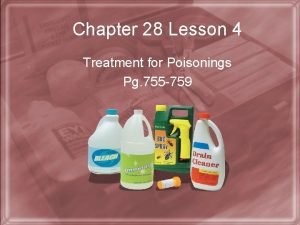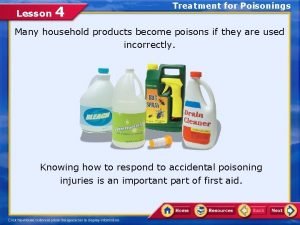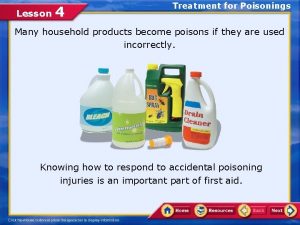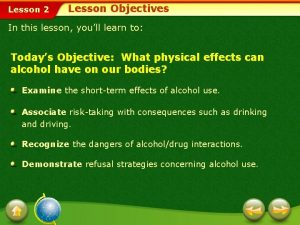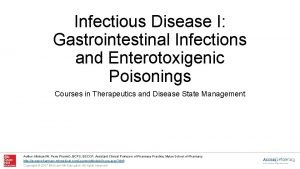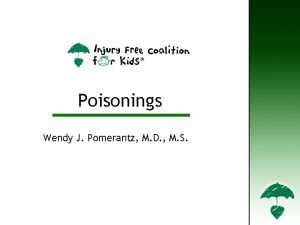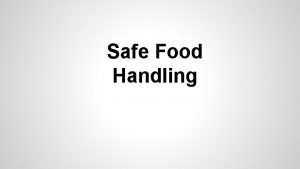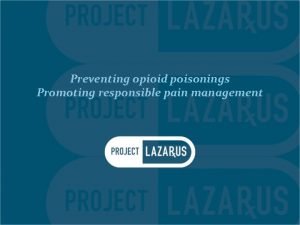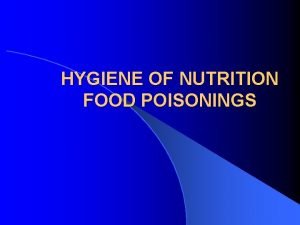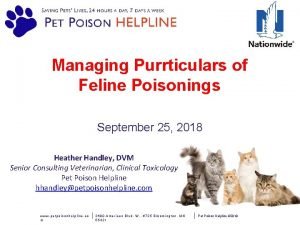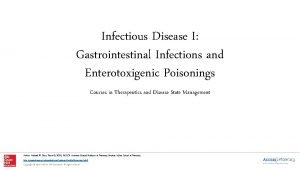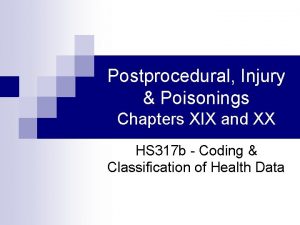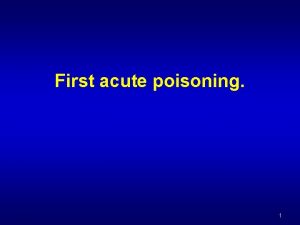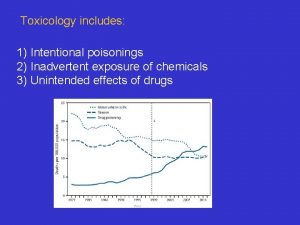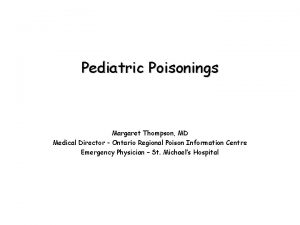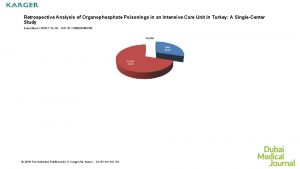Chapter 28 Lesson 4 Treatment for Poisonings Youll



















- Slides: 19

Chapter 28 Lesson 4 Treatment for Poisonings

You’ll learn to… • Analyze strategies for responding to poisonings. • Analyze strategies for responding to bites and stings. • Analyze strategies for preventing and responding to skin irritation caused by contact with poisonous plants.

Treatment for Poisonings • Knowing how to respond to poisoning emergencies is an important part of first aid. • A poison is any substance—solid, liquid, or gas that causes injury, illness, or death when introduced into the body. • Approximately 90% of poisonings occur in the room, and more than half of these poisonings involve children under the age of six. • Time is critical when a poisoning has occurred, first call 911 for help.

Types of Poisoning • The substance could be a chemical that is swallowed, a pesticide that is absorbed through the skin, or … • Venom a poisonous substances secreted by a snake, spider, or other creature, that is injected into the body through a sting or a bite. • Certain foods and plants can be poisonous • Gases and vapors may also be poisonous (carbon monoxide, exhaust fumes, and other fumes from stoves)

Types of Poisoning continued… • Your poison control center can tell you the correct procedure to follow in the event of a poisoning. • A poison control center is a 24 -hour hot line that provides emergency medical advice on treating poisoning victims. • Poison can enter the body in four ways: – Ingestion – Inhalation – Absorption – Injection

First Aid for Poisoning follow these first-aid tips. • Swallowed poisons vary in their first-aid treatment because the substances that can be swallowed affect the body differently. • Quickly try to determine what was swallowed and call your poison control center. • You may be instructed to give the victim something to dilute the poison or induce vomiting.

First Aid for Inhaled poisons • Inhalation is serious because of the damage that can be done to the lungs and other organs. • Quickly get the person to fresh air. • Do not breathe fumes. • If victim is not breathing, begin rescue breathing

First Aid for poison on the skin • It must be removed quickly to limit exposure to the body. • Remove contaminated clothing • Rinse the skin continuously with water for 15 minutes • Then rinse the skin with mild soap and water and rinse again. • If possible, have someone call 911 while you are rinsing the skin.

First Aid for poison in the eye • Immediately start flushing with water for 15 minutes. • Have the victim blink the eye as much as possible while flooding the eye. • Have someone call 911 while you are rinsing the eye.

When you call the poison control center • Be prepared to give your name, location, & phone number • Provide name of substance, when and how much was ingested. • Describe the state of the victim, as well as age and weight. • Be prepared to follow instructions and answer any questions.

First Aid for Poisonous Bites & Stings • Insect and animal stings and bites are among the most common sources of injected poisonings. – Insects --Spiders – Ticks --Scorpions – Snakes --marine life – And other animals

Snake Bite • Usually the bite of a venomous snake is not fatal • A bite can cause severe pain, loss of function and in rare situations, loss of a limb.

Snake Bite continued… • Get the victim to the hospital. Keep the victim calm and in the reclining position. • Keep bitten area at/below the heart. Immobilize the area. • Call 911 and follow instructions given. • Do not apply ice or heat. Also do not give aspirin or other drugs. • Maintain breathing and prevent aggravation of the wound.

Insect Bites & Stings • Some insects, such as bee, hornet, yellow jacket, wasp and fire ants, cause painful stings that can produce a strong allergic reaction. • Those highly allergic can cause a life-threatening condition. • These people need immediate medical attention

First Aid for Insect Bites & Stings • Move to a safe area to avoid further harm. • Try to remove the stinger by scraping it off. • Wash the area with mild soap and water to help prevent infection. • To reduce pain & swelling, apply a cold compress. • Apply hydrocortisone cream, calamine lotion, or a baking soda paste to the area.

First Aid for Insect Bites & Stings continued… • If the victim was bitten by a venomous spider or scorpion and begins to have trouble breathing or shows signs of a sever reaction, call 911 immediately.

First Aid for Poisonous Plants • Allergic skin reaction from poison ivy, poison oak or poison sumac. • Symptoms include blistering, swelling, burning and itching and the person may develop fever. • The first defense is to recognize and avoid these plants.

First Aid for Poisonous Plants continued… • If you come in contact, remove contaminated clothing. • Flush affected areas with water then wash with soap and water. If a rash develops, use calamine lotion to relieve itching. • For severe discomfort or pain, seek medical attention.

Chapter 28 Lesson 4 Review Questions 1. Define the terms poison and venom. 2. Poisons can enter the body 4 ways. Name them and give examples for each one. 3. What information should you have ready when you call a poison control center? 4. Analyze and describe a strategy for preventing an accidental poisoning in your kitchen.
 Fspos
Fspos Novell typiska drag
Novell typiska drag Nationell inriktning för artificiell intelligens
Nationell inriktning för artificiell intelligens Ekologiskt fotavtryck
Ekologiskt fotavtryck Varför kallas perioden 1918-1939 för mellankrigstiden
Varför kallas perioden 1918-1939 för mellankrigstiden En lathund för arbete med kontinuitetshantering
En lathund för arbete med kontinuitetshantering Kassaregister ideell förening
Kassaregister ideell förening Tidbok för yrkesförare
Tidbok för yrkesförare Sura för anatom
Sura för anatom Densitet vatten
Densitet vatten Datorkunskap för nybörjare
Datorkunskap för nybörjare Boverket ka
Boverket ka Debattartikel struktur
Debattartikel struktur Magnetsjukhus
Magnetsjukhus Nyckelkompetenser för livslångt lärande
Nyckelkompetenser för livslångt lärande Påbyggnader för flakfordon
Påbyggnader för flakfordon Formel för lufttryck
Formel för lufttryck Offentlig förvaltning
Offentlig förvaltning Urban torhamn
Urban torhamn Presentera för publik crossboss
Presentera för publik crossboss




















